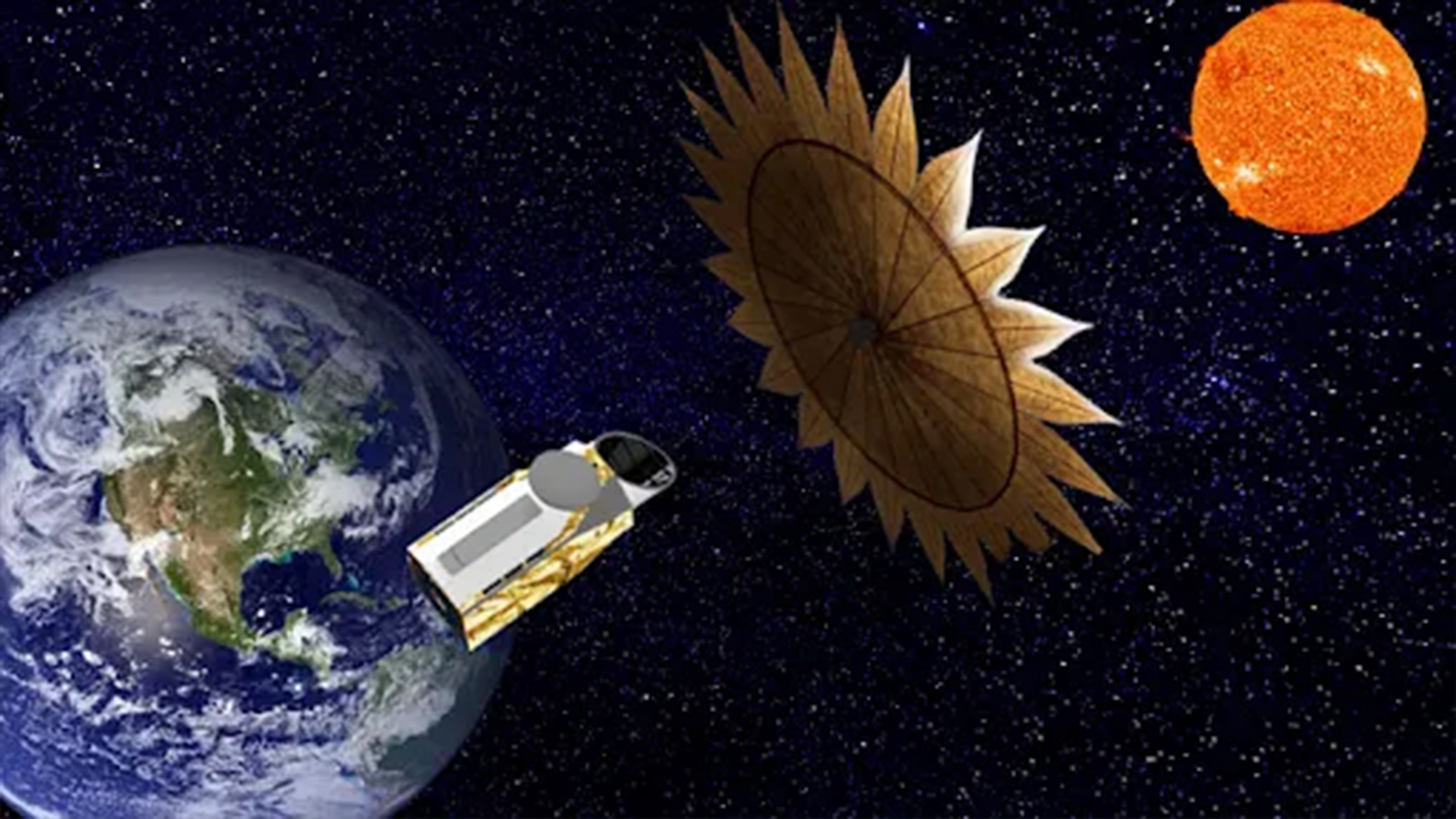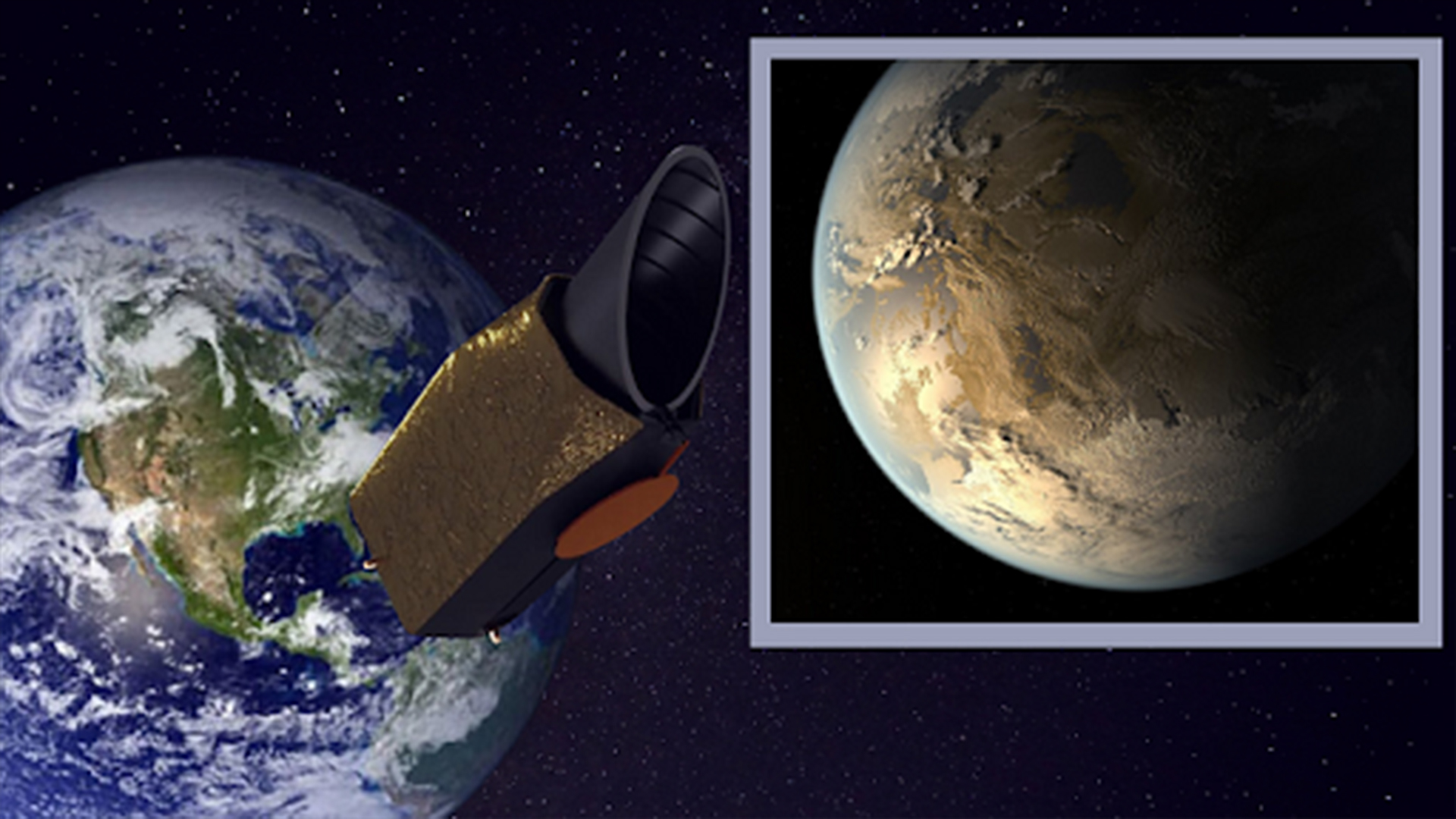NASA is hunting for life outside the solar system. Here's how.
"We aren’t going to see little green men but rather spectral signatures of these key chemicals, or what we call biosignatures."

Planning is well underway for NASA’s Habitable Worlds Observatory (HWO), which will scour the atmospheres of planets outside the solar system for telltale signs of alien life.
This week, a workshop was held at the California Institute for Technology (Caltech) at which scientists and engineers discussed the state of technology that could be employed by the HWO, one of NASA’s next big telescope projects after the James Webb Space Telescope (JWST).
The hunt for signs of life in the atmospheres of planets outside the solar system orbiting distant stars — exoplanets — is akin to hunting for a needle in a cosmic haystack. After all, NASA estimates there are several billion Earth-size planets sitting in the habitable zones of their stars, which regions with the right temperatures to allow liquid water to exist. And that's in the Milky Way alone.
Yet, scientists at least have a good idea of what they should be hunting for as well as knowledge of signs that would potentially indicate life.
"We want to probe the atmospheres of these exoplanets to look for oxygen, methane, water vapor, and other chemicals that could signal the presence of life," NASA’s Exoplanet Exploration Program chief technologist, Nick Siegler, said in a statement. "We aren't going to see little green men but rather spectral signatures of these key chemicals, or what we call biosignatures."
Related: NASA may have unknowingly found and killed alien life on Mars 50 years ago, scientist claims
The HWO was first proposed as a top priority by the Decadal Survey on Astronomy and Astrophysics 2020 (Astro2020), a roadmap of goals for the astronomy community to take on over the coming decade. This is because, in addition to hunting for signs of life outside the solar system and helping astronomers understand entire planetary systems, the observatory will also play a major role in astrophysics investigations.
Get the world’s most fascinating discoveries delivered straight to your inbox.
Though the mission is set to launch in the late 2030s or early 2040s, advancing technologies the telescope will use now could help prevent cost overruns later down the line, according to Dmitry Mawet, member of the HWO Technical Assessment Group (TAG).
Throwing shade at distant stars
To perform deep investigations of exoplanet atmospheres in order to hunt for signs of life, the HWO will tap into its ability to block out the glares of stars those exoplanets orbit.
Blocking strong light coming from these stars will allow fainter bits of starlight, reflecting off the atmospheres of orbiting planets around these stars, to be seen. Chemical elements and compounds absorb and emit light at unique wavelengths characteristic to their compositions, meaning light exposed to a planet's atmosphere carries fingerprints of elements it is made of.
Scientists take this light and, using a process called spectroscopy, search for these fingerprints. Such chemical fingerprints could include biosignatures indicating chemical compounds exhaled or inhaled by living things.
There are two main ways that the HWO could potentially block out excess starlight. On one hand, it could utilize a large external light block called a starshade, which would unfurl from the HWO after its launch into a massive sunflower-shaped umbrella.
Or alternatively, it could use an internal starshade called a coronagraph, similar to instruments scientists use to block out light from the sun’s bright photosphere to study its nebulous outer atmosphere, or corona. Siegler added that currently, NASA has decided to focus the HWO around coronagraph technology used on several other telescopes, including the JWST and forthcoming Nancy Grace Roman Telescope.
Located on the Hawaiian mountain Mauna Kea, the W. M. Keck Observatory is already using a coronagraph invented by Mawet in conjunction with the Keck Planet Imager and Characterizer (KPIC) to study exoplanets. The coronagraph lets the KPIC picture thermal emissions from young and hot gas-giant exoplanets, allowing scientists to investigate how these planets and their planetary systems evolve.
Earth-like planets that the HWO will set its sights on can emit light around 10 billion times fainter than that of their stars, meaning a coronagraph for the future space telescope would need to push starlight well past its current limits.
"As we get closer and closer to this required level of starlight suppression, the challenges become exponentially harder," Mawet added.
Suppressing starlight with a shapeshifting mirror
One of the ideas put forward at the Caltech meeting to enhance suppression of light from a distant star is to put a mirror within a coronagraph that can be deformed to control light rays.
Employing thousands of actuators to drive the shape of the mirror as well as push and pull on its reflective surfaces could stop stray light from making its way to the final image, thus preventing unwanted "blobs" of residual starlight. A deformable "active" mirror of this type is the kind set to be used by the Nancy Grace Roman Space telescope, in fact, an observatory set to launch no later than 2027. Roman should let astronomers see gas giants around a billion times fainter than their stars as well as debris around stars left over from the births of planets.
This will be a vital stepping stone towards more powerful technology that will be needed by the HWO, bridging a gap in coronagraph masks and active mirrors too great to cover in a single proverbial bound.
"We need to be able to deform the mirrors to a picometer-level of precision," Mawet explained. "We will need to suppress the starlight by another factor of roughly 100 compared to Roman’s coronagraph."
During the Caltech session, scientists also addressed the best type of mirror to use for the HWO and what it should be coated with, as well as other potential instruments for the telescope.
As planning for the HWO continues in earnest, astronomers are also at work selecting Earth-like exoplanet targets for the future telescope to train its gaze on. This hunt will include the use of the Caltech-operated Keck Planet Finder (KPF) at the Keck Observatory, which has been specially designed to look for Earth-like planets in the habitable zones of small red stars.
"The workshop helped guide us in figuring out where the gaps are in our technology and where we need to do more development in the coming decade," Mawet concluded.
Robert Lea is a science journalist in the U.K. who specializes in science, space, physics, astronomy, astrophysics, cosmology, quantum mechanics and technology. Rob's articles have been published in Physics World, New Scientist, Astronomy Magazine, All About Space and ZME Science. He also writes about science communication for Elsevier and the European Journal of Physics. Rob holds a bachelor of science degree in physics and astronomy from the U.K.’s Open University






